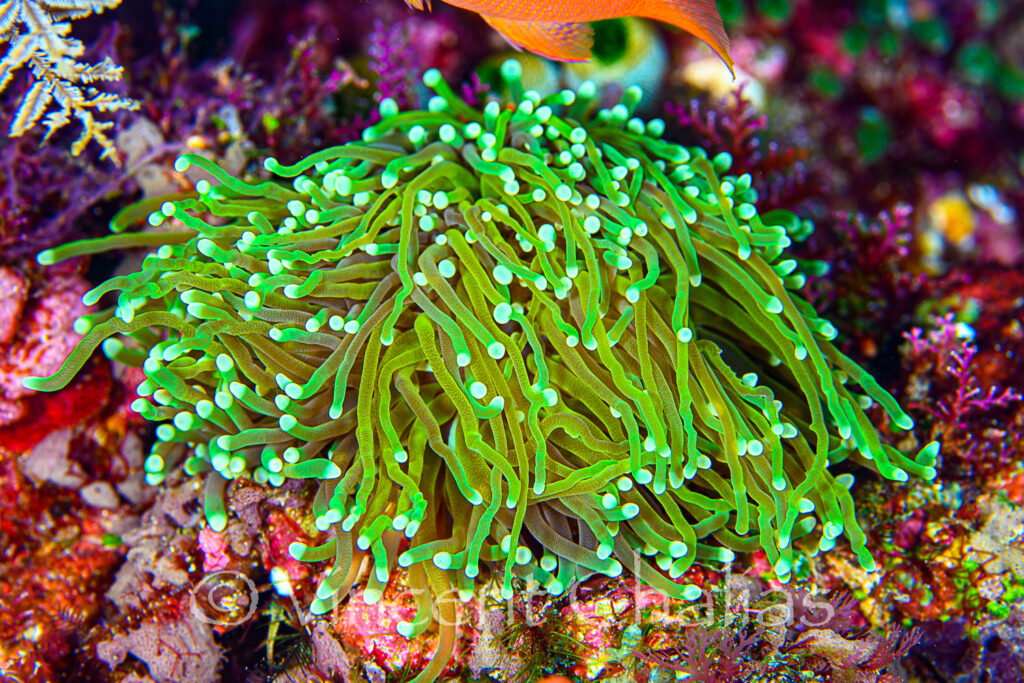
Beneath the azure waters of the world’s tropical coral reefs lies a mesmerizing world of vibrant colors and extraordinary biodiversity. Among the myriad of corals that grace these underwater ecosystems, one species stands out for its striking beauty and rarity—the ‘Dragon Soul’ Gold Torch Coral, Euphyllia glabrescens. This elusive coral species has captured the attention of many reef aquarium enthusiasts and has never been as popular as today. We’ve been lucky enough to meet with this amazing coral in the wild!
Unveiling the ‘Dragon Soul’ Gold Torch Coral
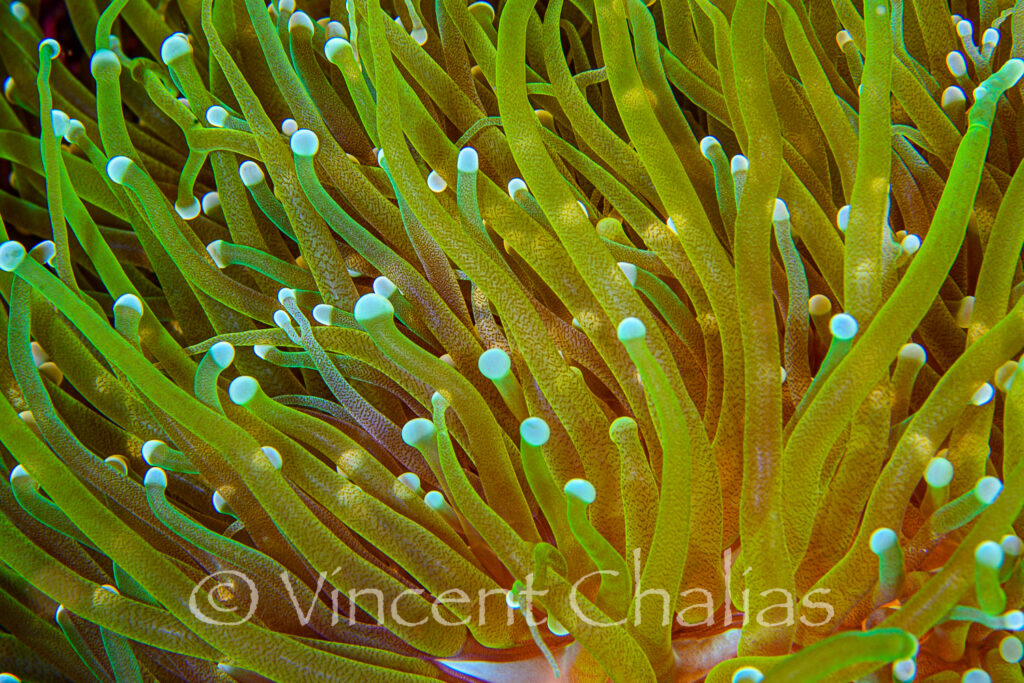
We’ve seen gold torches in the wild, and under intense sunlight, they look mostly brown with a light golden hue on the tentacle stems. But the ‘Dragon Soul’ Gold Torch Coral, is a testament to its exquisite appearance. These corals were bright orange! These tentacles exhibit a breathtaking golden, orange, or yellow hue, with green reflexion toward the ends, with bright yellow tips which are responsible for its sought-after name. When fully expanded, the Holy Grail color form of Gold Torch Coral resembles an underwater torch, illuminating its surroundings with its radiant beauty.
The Mystique of the Wild Habitat
While Euphyllia glabrescens has gained popularity as a stunning aquarium coral, its wild habitat remains relatively enigmatic and challenging to study. The ‘Dragon Soul’ Gold Torch Coral is typically found in a very specific habitat.
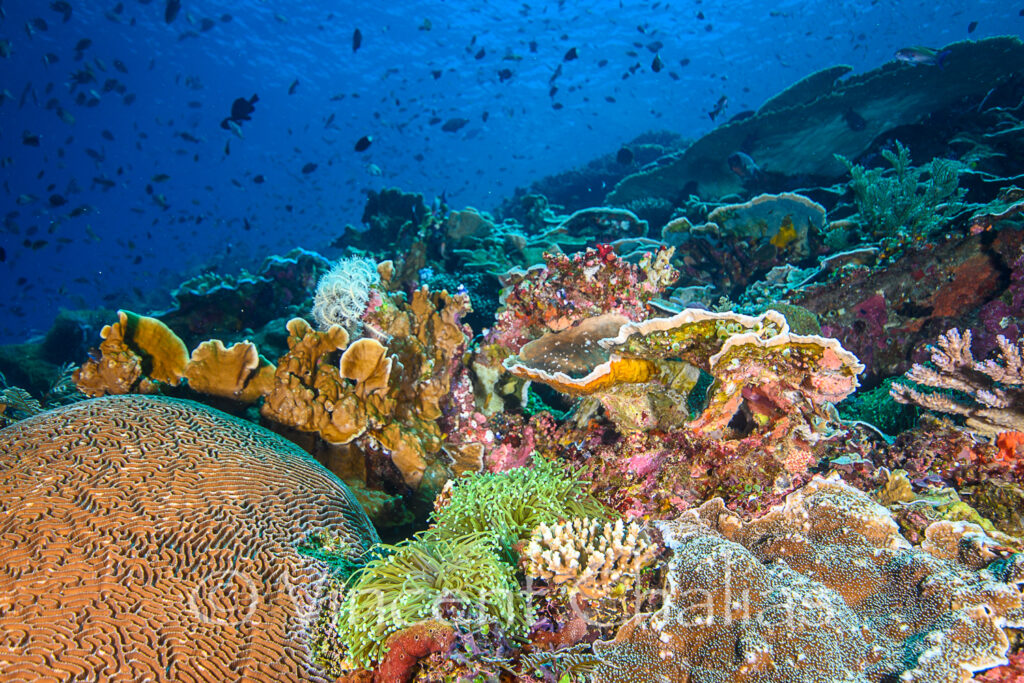
It was found on a southern Indonesian reef, on a reef subjected to very high tidal current, in intermediate waters, between 15 to 22 meters (35 to 66 feet). These natural habitats are characterized by clear waters, impactful flow, cooler water temperature, and abundant sunlight and food.
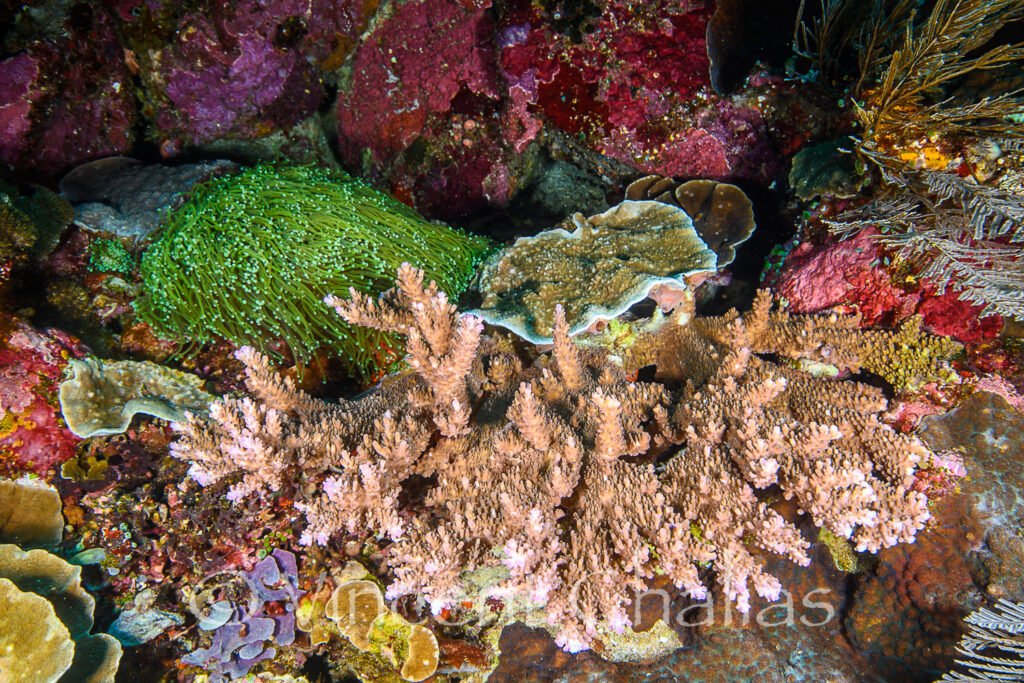
Habitat Diversity: Euphyllia glabrescens is known to inhabit a variety of reef environments, including reef slopes, reef crests, and reef flats. They are found on sheltered turbid reefs, and on exposed reefs (where they become more dominant). The particular reef I’m showing here was very well structured, with large bushes of branching acropora such Acropora muricata, A. pulchra, A. yongei, A. intermedia, in the shallows. Then a layer of table Acropora, such as A. cytherea, A. florida, A. sukarnoi, A. efflorescens, and other corals such as Isopora palifera.
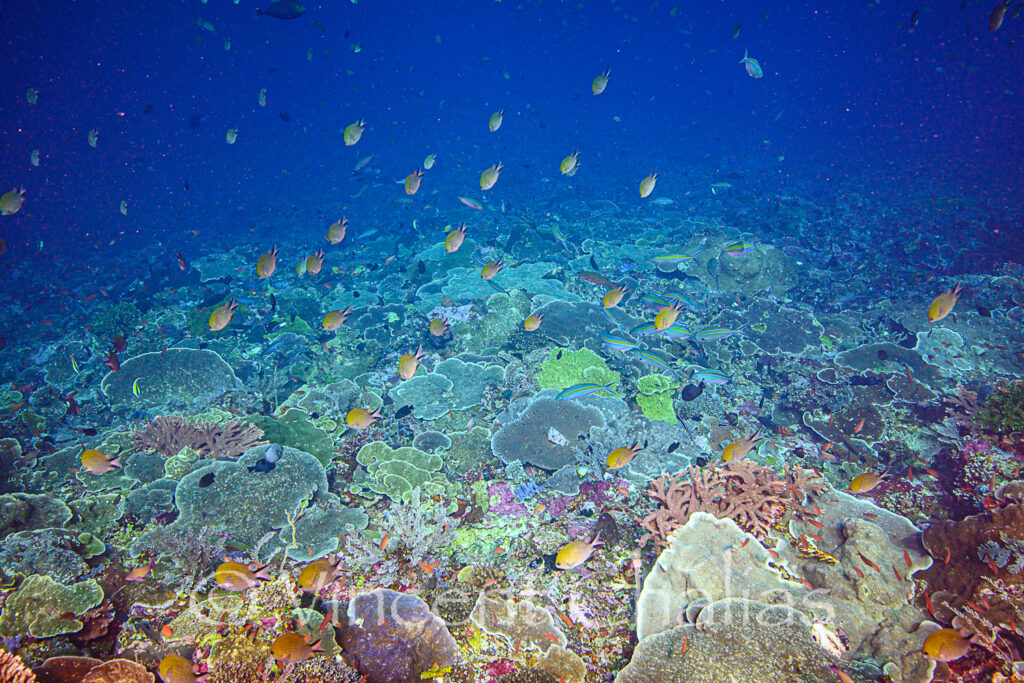
Then, going deeper, we start to find the encrusting and plating coral species including Montipora confusa, M. cactus, M. undata, M. hispida and other Echinopora spp, Echinophyllia spp…. the species mix would change as we would go down, SPS being slowly replaced by LPS. It was in the intermediate zone between table acros and encrusting corals that we found a few colonies of ‘Dragon Soul’ Gold Torch, Euphyllia glabrescens corals.
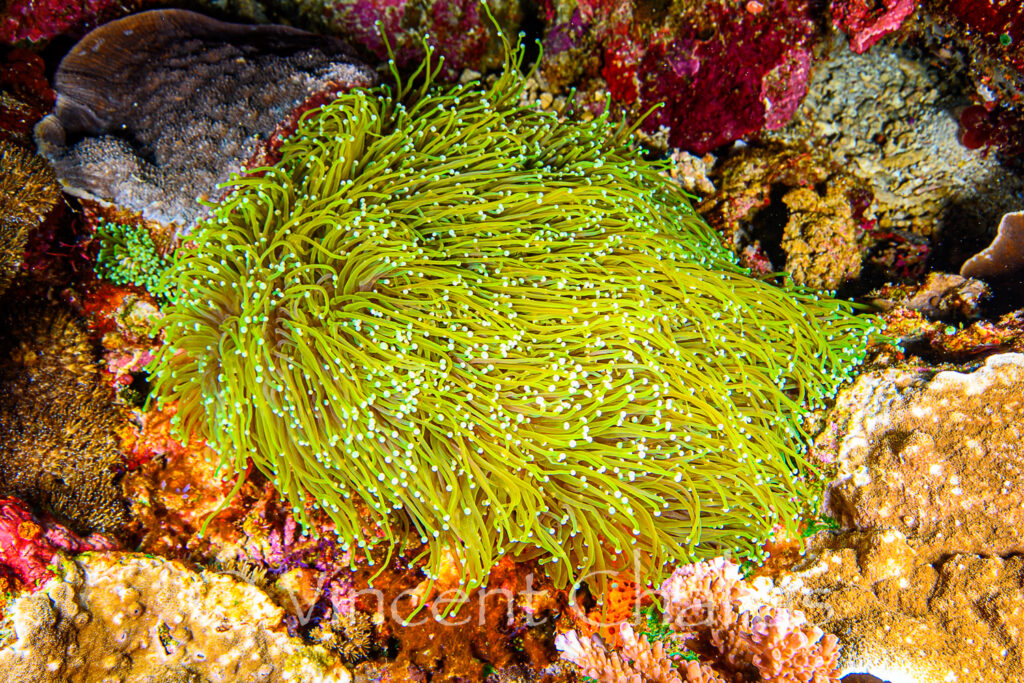
Different sizes colonies: Because Euphyllia glabrescens is a brooder and releases sinking and floating larvae, we can always find smaller colonies and even single polyps within the corals, below the larger colonies.
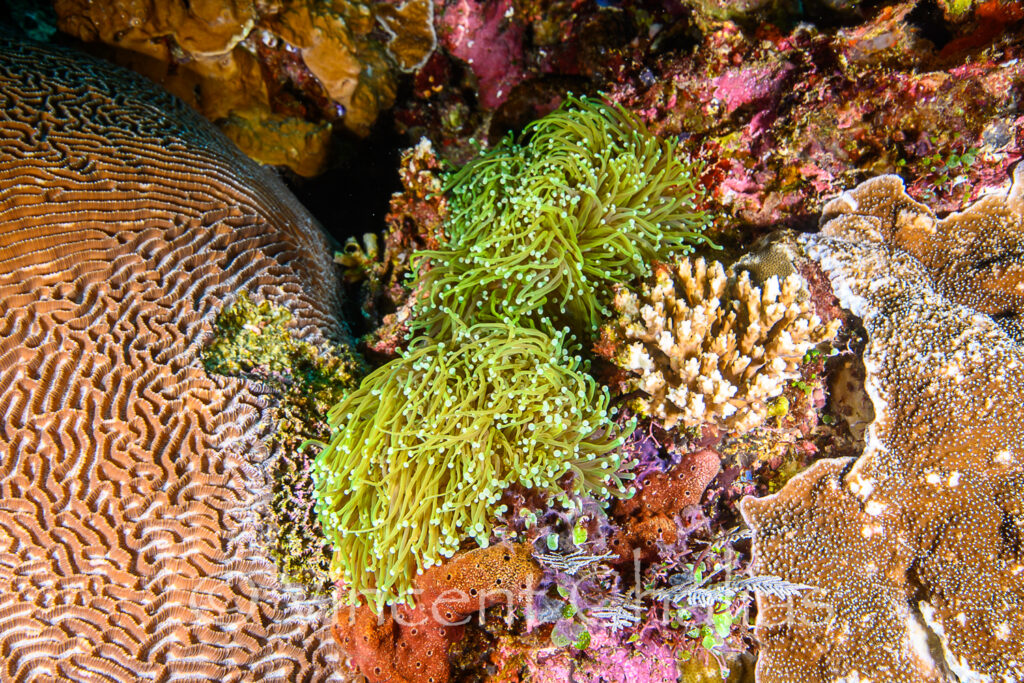
Feeding Strategy: While primarily reliant on its zooxanthellae for nutrition, Euphyllia glabrescens is also very effective at extracting food within high-flow water. It extends its tentacles to capture small planktonic organisms and detritus drifting in the water column. The turbulences created by the agitated tentacles allow prey capture.
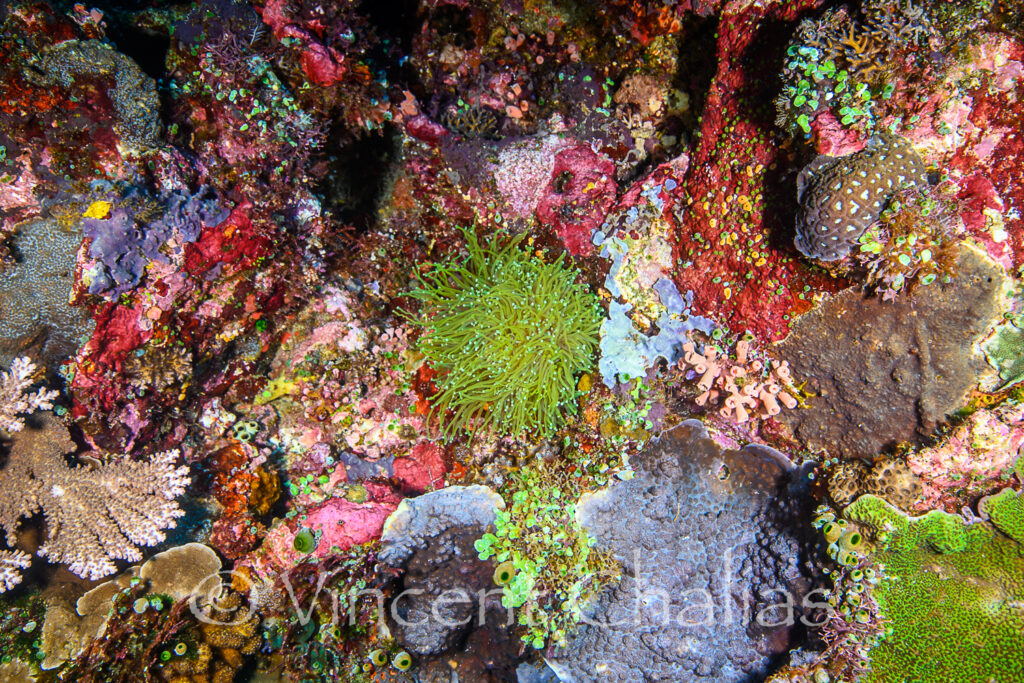
Euphyllia glabrescens, specifically the form we call the ‘Dragon Soul’ Gold Torch Coral in the aquarium trade, is an enchanting and elusive coral found in very few reefs on the planet. Its striking appearance and intriguing biology make it a subject of fascination for marine enthusiasts and researchers alike. However, this beauty comes with vulnerability, as the coral faces various threats in the wild, including coral bleaching and the potential for overcollection for the aquarium trade.




